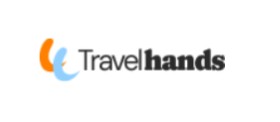
Objectives of the service

In London, travelling for a Visually Impaired Person (VIP) usually ends up twice as expensive and takes double the time as for a sighted person on the same route. VIP within our network have shared their concerns in travelling and cite that to cover 10 mins walking distance, they must book a taxi (including waiting time, payment etc). This is expensive and is a blow to their self-confidence because of the short distance involved.
Travel Hands eases the outdoor commute of VIP by pairing them with sighted & verified volunteers to walk together to similar destinations. Since 44% of VIP in the UK use smartphones, we operate in a hybrid model: call centre and mobile-web apps. Customer service monitors the journeys of our users when they are active for improved safety. With our technology, a journey request is sent by a VIP or by the backend team on behalf of VIP to nearby available volunteers. The accepting volunteer will then pick up the VIP and walk towards the requested destination.
The demonstration project will enable us to improve the matching algorithm of the application, improve the design of the mobile app and add the reward scheme for volunteers.
Users and their needs
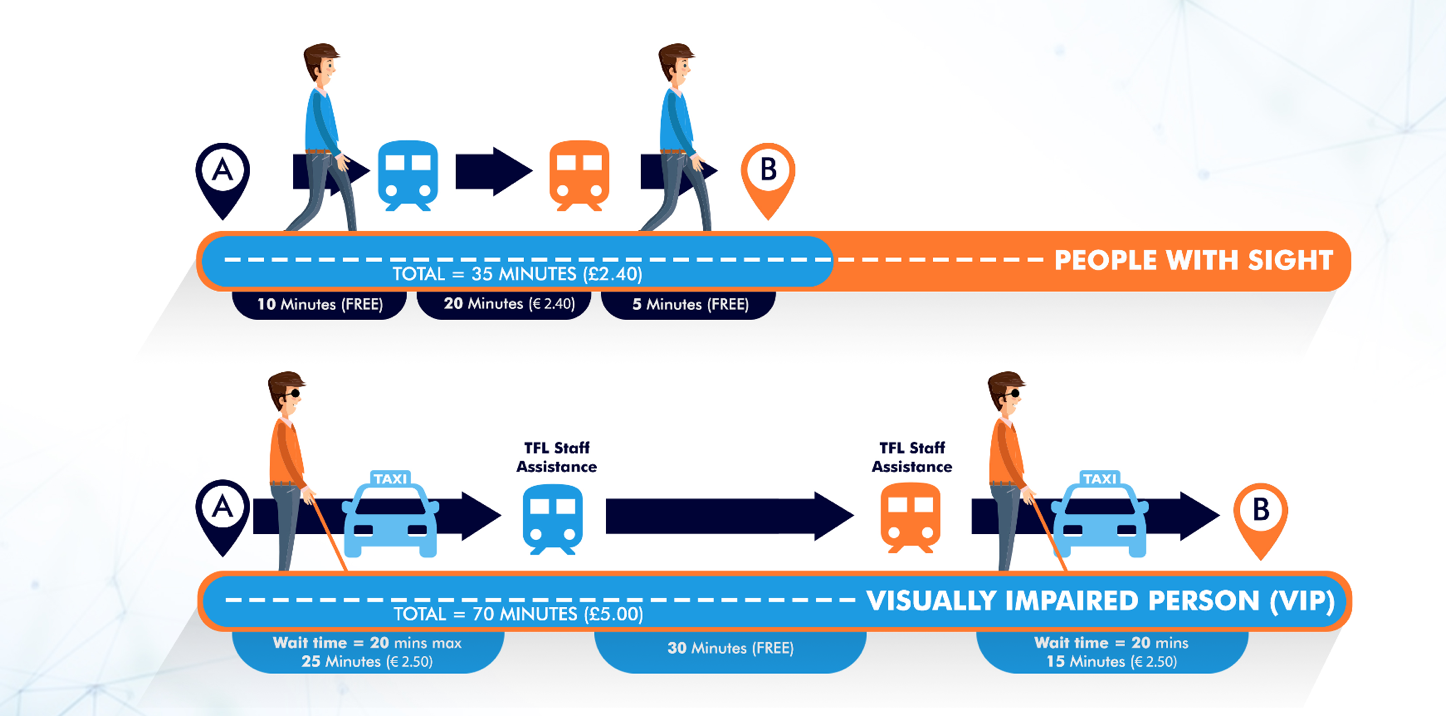
Travelling safely, cheaply, and independently is incredibly challenging for the 285 million VIP across the world. Covid-19 has made it even more challenging for them to move around in the city as they might require physical assistance to navigate. There are 42,300 VIP in London and 360,000 all over the UK trying to find a solution to the problem.
Transport for London (TfL) has shared that 84% of disabled Londoners report that their disability limits their ability to travel. Royal National Institute of Blind (RNIB) Statistics suggest:
-
20 minutes is the average time a VIP will have to wait for manual assistance before being assisted onto modes of transportation
-
8% of hospital admissions from falls are from VIP
-
Only 17% of VIP receive emotional support for their sight problems
-
Only 13% of people with visual impairment take part in sport once a week, impacting negatively on their fitness levels
Service/ system concept
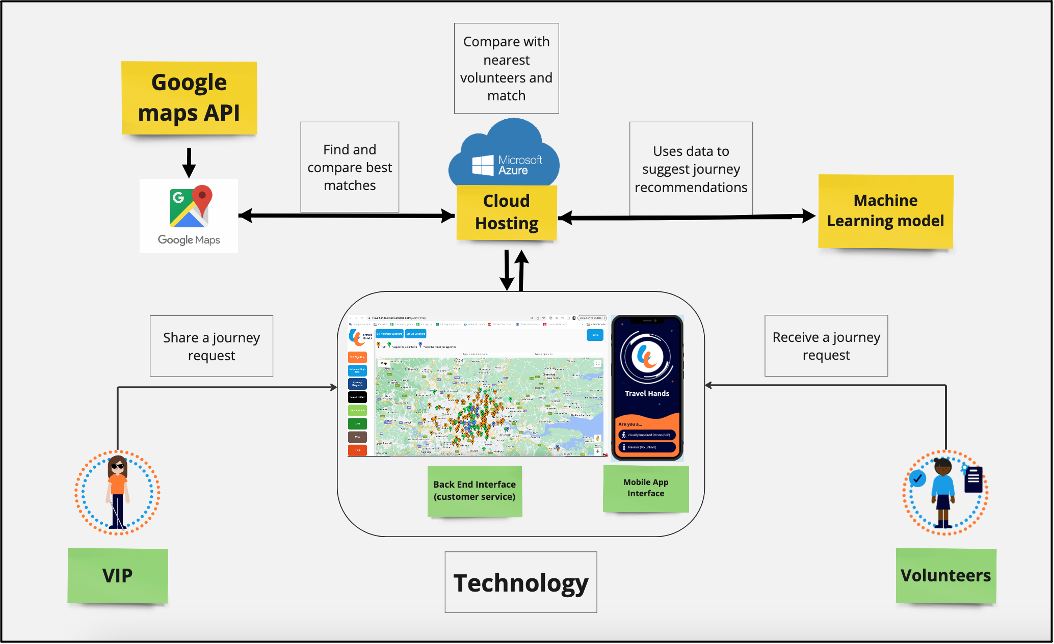
VIP and Volunteer Stakeholders
A VIP registers a journey request either through the call centre service by calling or emailing their journey request or either through the mobile App themselves. The volunteers receive the request through the App or emails (rare cases of people not using mobile App). The format of the request involves the following elements as elaborated in the diagram image below.
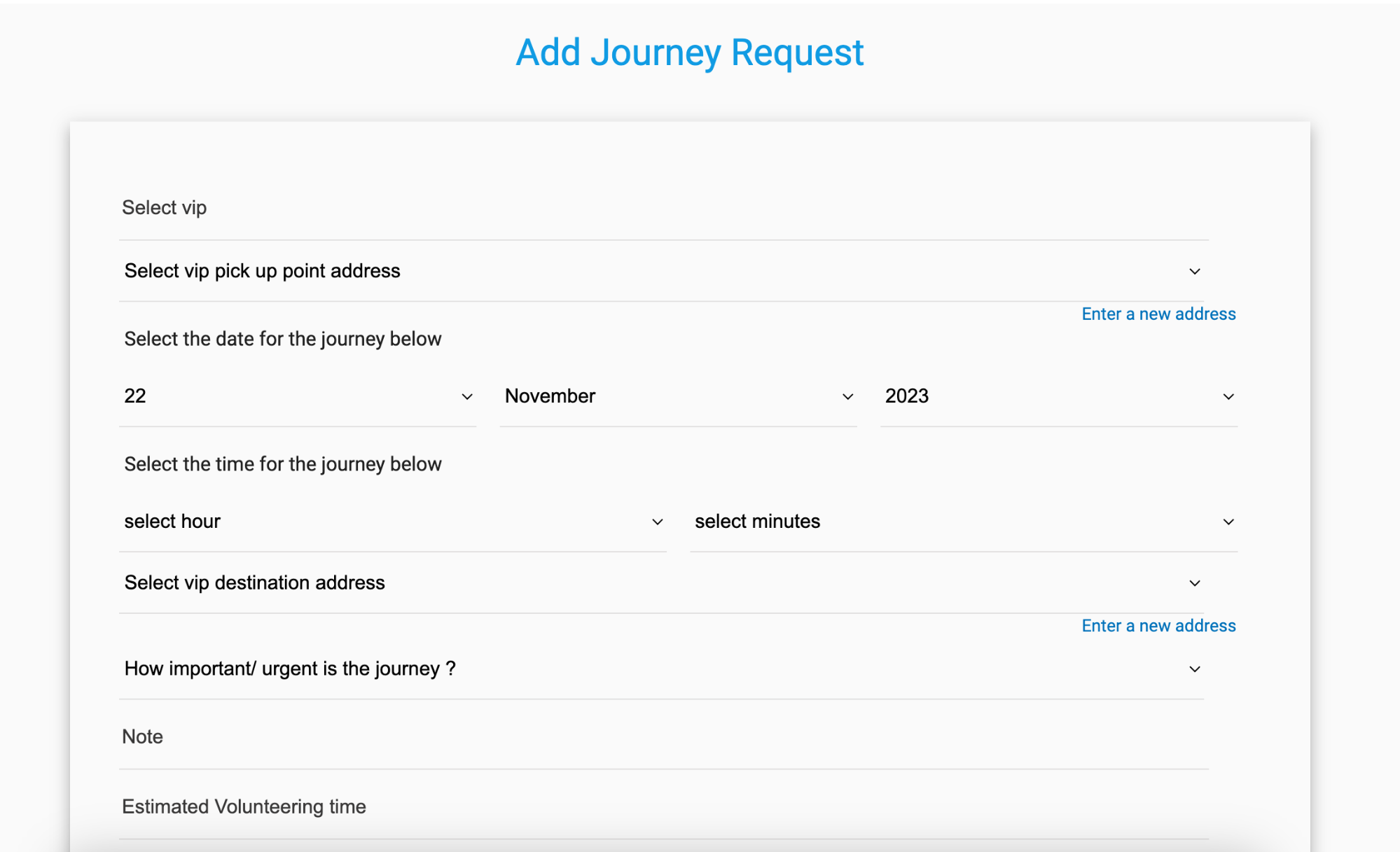
Technology
The matching algorithm we have built compares the request from the VIP end with the volunteer’s availability and distance from VIP request. The VIP or customer service agent contacts the list of volunteers displayed on the mobile app or on the back-end dashboard to the most eligible volunteers. The technology is hosted on Microsoft cloud services where the algorithms hit the external API such as Google Maps API. The distance and time comparison are relayed from the Google Maps API to the Travel Hands algorithm and therefore, displayed on the mobile App interface and the back end dashboard.
The backend dashboard displays the data of the users for efficient matching and managing the needs of the users.
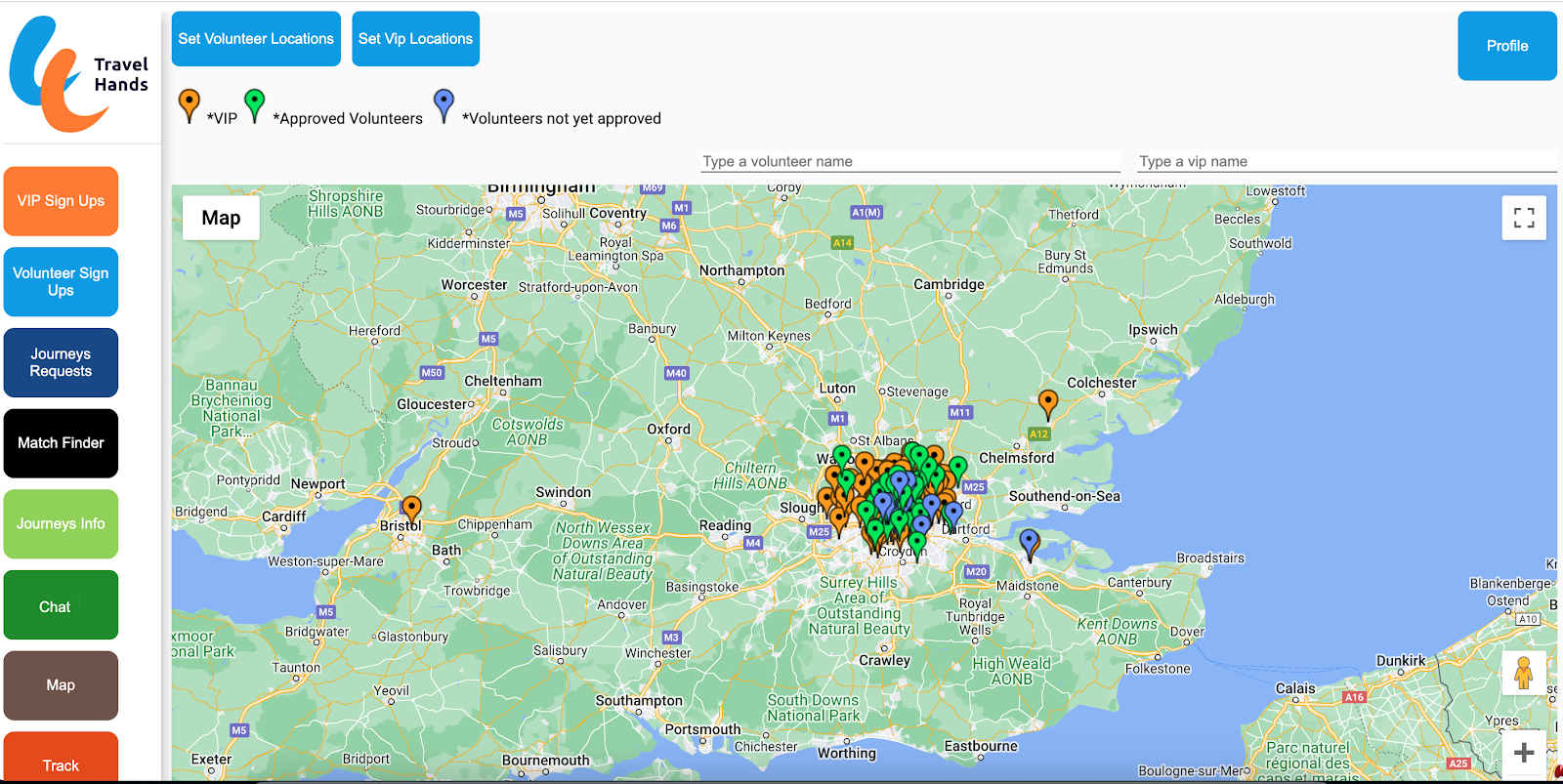
VIP and Volunteer Sign Ups Tabs: The back-end dashboard assists us in managing the user's information such as preferences, availability, payment & balance, or any particular notes.
Journey Requests, Match Finder, Journeys Info Tabs: These help us to process the requests, find the best matches and ensure the confirmed journeys are scheduled and monitored.
Chat Tab: We have added a chat feature with our users to interact with the customer service team.
Map Tab: The diagram shows the users present on the map in London and around to enable the customer service team to organise the journeys as per the location of the users.
Track Tab: The active journeys are displayed on the tab for the customer service team to monitor the progress.
Space Added Value
We are using the Global Navigation Satellite System (GNSS) space asset by paying Google Maps. Additionally, we are using the What3words (https://what3words.com/) API to pinpoint the precise location of the users.
Google Maps API will be used to compare the distances between a VIP and a set of volunteers nearby. This will help in calculating the distance and time required to reach each other by walking and by public transport. We currently use Google Maps API to compare the distance and time differences between VIP and volunteers to execute the most favourable matches.
What3Words has divided the world map into 3-meter square boxes and given each box a unique 3-word name. We will use them to precisely locate the VIP’s locations. Then, volunteers can navigate towards VIP easily. We are exploring other services similar to What3Words to provide accurate location tracking.
Current Status
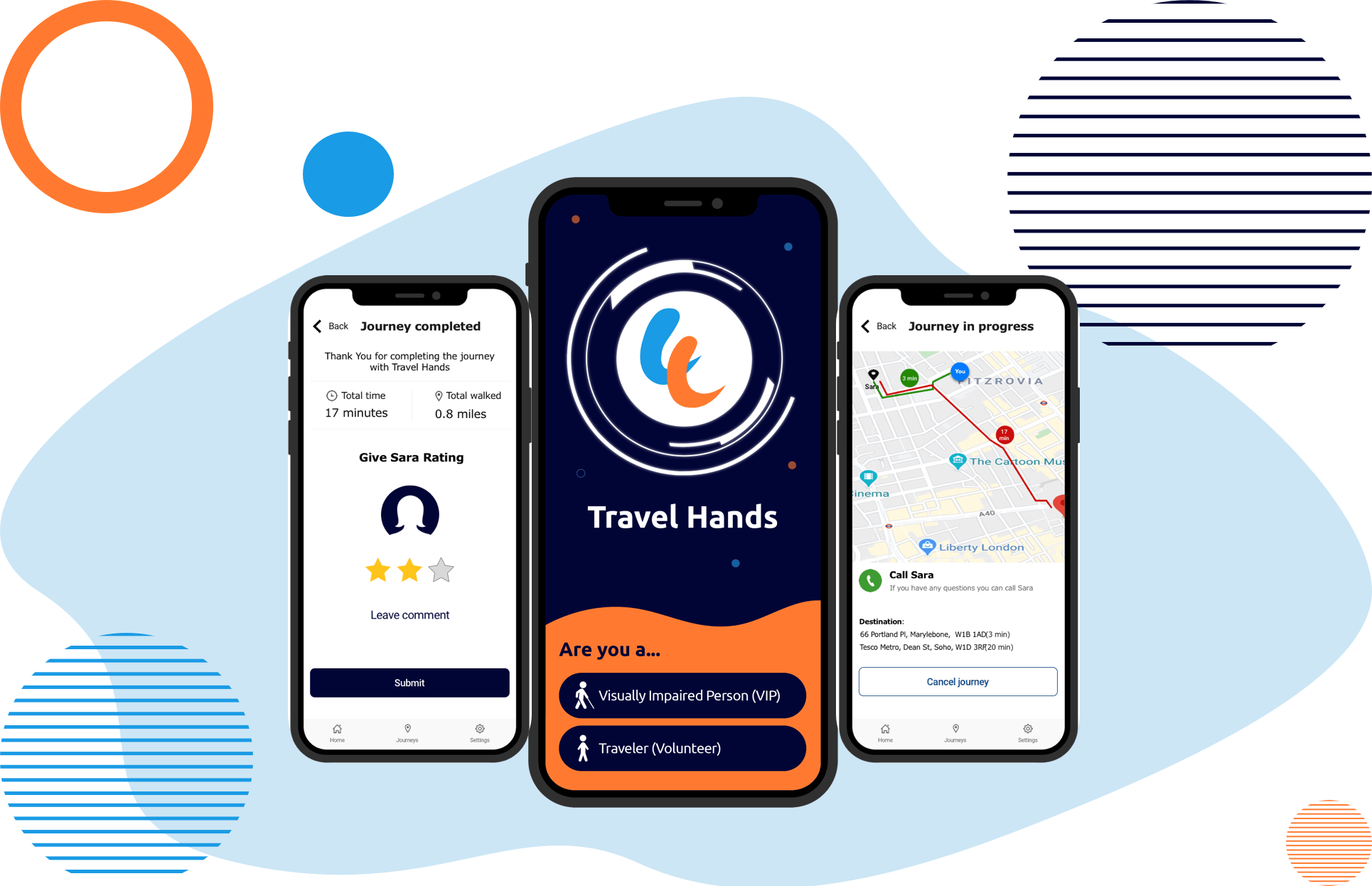
We are in the process of redesigning the mobile app.
We have managed to advertise to BT billboards across London. An image is attached for reference.

Travel Hands started in May 2021 in London, in the form of a call centre, with 700+ journeys completed, 300 VIP sign-ups, and 84 active volunteers. We are currenlty working on the paig guides initiaitve due to the increase in demand of the service.


